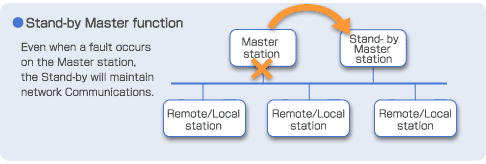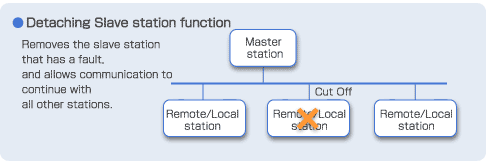One of the major benefits of CC-Link networks is the ability to maintain operation even when problems occur. The technical term of this is the provision of enhanced reliability, availability and serviceability (RAS) functions, but we think “The Non-Stop Open Network” says it in a more memorable way. These functions provide operators of CC-Link networks with improvements in both mean time before failure (MTBF) and mean time to repair (MTTR) over alternative network types.
There are several mechanisms that provide this “non-stop” capability, including the Standby Master Function that enables the provision of a standby master within any network. This means that even when a fault occurs in the master station, the standby master will be available to maintain network communications and the plant will continue to function.
Similarly, the Detaching Slave Station Function means that should any slave station develop a fault, it can be detached from the network, allowing the rest of the plant to continue uninterrupted. And, once the fault has been rectified, the repaired station can be returned to the network using the Automatic Return Function with no need to reconfigure the rest of the system. Again, this is valuable for maintaining uptime and hence productivity.
Finally, the Testing and Monitoring Function enables supervisors to run data link tests, status tests and circuit tests on a regular basis to maintain plant uptime, to recover speedily from any communications fault and to debug the system at startup. These functions combine to ensure non-stop productivity from any plant controlled using a CC-Link network.






